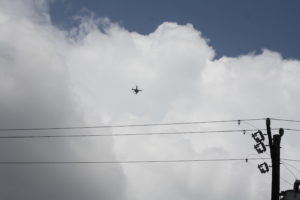Unmanned Aircraft Systems New Rules
The FAA’s New Rules for small unmanned aircraft systems (UAS)
The FAA’s new rules (Part 107) for the commercial flying of small unmanned aircraft systems (UAS), more commonly and sometimes incorrectly called drones, were announced on June 21, 2016. This was primarily discussed Monday, June 27th when I attended The NextGen Air Transportation Consortium specifically The NGAT UAS Public Forum.
Brooks Pierce sponsored the event, so I will add a link regarding their overview of this announcement. You can also find a link to the FAA full document in the second sentence of Attorney Stephen Hartzell’s report. The report I do recommend you read is his overview found through the link below. Just click the scales to open the PDF.
Abbreviations you might want to know.
First here is a list of abbreviations and terminologies I think will be useful for some who may not know anything about this subject. I had to learn a few myself as the meeting proceeded.
FAA – Federal Aviation Administration – They are the government authority on all rules, regulations, and safety regarding aviation. Generally, they govern the laws of the sky. They are also responsible for the advancement of civil aviation.
UAS – Unmanned Aircraft Systems
Drone – unmanned aircraft piloted remotely. Used for surveillance or even armed with weapons for military use. In this case, no one will have rights to arm them with the possible exception of a company contracted to build for the military. For many, they are simply a hovering tool collecting pictures or video.
RPIC – Remote Pilot in Control – Just as it suggests a person has a controller on the ground and uses this device to control the aircraft’s takeoff, flying and landing capabilities along with any recording it may do.
VSOL – Visual Line of Sight – This is a very important term as it is part of the new regulations for commercial flyers. You need to have visual sight of your unmanned aircraft systems.
TSA – Transportation Security Administration – They will need to vet you in order to get your license.
FSDO – Flight Standards District Offices
Notes
Now, the following are my notes, I’d like to share based on what was discussed in the meeting and the very little research I done on the subject. I am simply putting this information out to help people determine quickly if this is worth the trouble to investigate.
A question popped up in the meeting and on many websites I have seen; so I am jumping straight to the answer first. Bottom line the company doesn’t need to be licensed. The person (RPiC) flying the unmanned aircraft system must be licensed.

unmanned aircraft systems
Part 107 will go into effect around the end of August (29th or after). Part 107 creates a new certification process for flying drones. One will be required to obtain a Remote Pilot Certificate with a rating for small unmanned aircraft systems. This will replace the former regulations and Section 333 Exemption that many were struggling to get. You can’t currently get the 333 Exemption now either, so if you don’t have it you will need to wait. If you already have the 333 Exemption you can still fly unmanned aircraft systems until the license expires, but at that time you will need to apply for the Part 107 certificate.
The 333 Exemption
The 333 Exemption requires one to have a manned aircraft license. This made it extremely hard for commercial use. The time to get someone trained, or hire a pilot was expensive and sometimes time-consuming, so this opens the doors for more to be able to profit using drones.
The Test
According to one source, the test will consist of around 60 multiple choice type questions. One will need to pass with at least 70% of the answers being correct. The test will be timed. Some of the areas will be regulations, airspace requirements, weather, loading, performance, and operations. I would also suspect there might be some questions on pre-flight checks. Again for specifics please check links below.
Registration
One will also need to register every commercial drone (must weigh less than 55lbs.) with the FAA. The cost is $5.00 for each unmanned aircraft systems registration number. The cost to take the test will be roughly about $150.00. If you pass it could take up to 2 months to receive the official license, but you may get a temporary one within 10 days.
One must also pass an online training course provided by the FAA. In addition, you must also be vetted by the TSA.
Other things to consider.
There are many rules, which I will not go into extensive details, but I will touch on a few. Besides registering your drone with the FAA, the RPiC must give the drone up for inspection and any records upon requests. You also must notify the FAA of any serious injuries or property damage of $500 or more within 10 days of the incident.of
Insurance was one of the hot topics for a few moments at the meeting. Let me just says this, if you are a business you probably should have insurance. The FAA does not yet require insurance, as they are letting each state choose. For more information about how to find an insurance broker, contact your local FSDO and ask for recommendations suitable to your requirements.
Flying is only permitted during the daytime and the drone must be in VLOS (Visual Line of Sight). The limitation on height is 400 feet or less for altitude with one exception. If used to navigate around a building the drone must be within 400 feet. Meaning if the building is 500 feet high the drone must not exceed 900 feet in altitude. It also must not fly farther than 400 feet away from the side of the building. There are waivers you can apply for, but they are also limited. The wording seems to state under 400 feet so the numbers I would recommend are actually 399 since 400 feet is technically not under.
The rules for hobbyists had an addition per Part 101. You can find more information on this at the end of the PDF by Stephen Hartzell or do a search for it yourself.
Helpful Links:
FAA – Hobbyist https://www.faa.gov/uas/getting_started/fly_for_fun/
FAA Commercial/Work/Business –
https://www.faa.gov/uas/getting_started/fly_for_work_business/
You are on your own for state regulations as each one is different.

